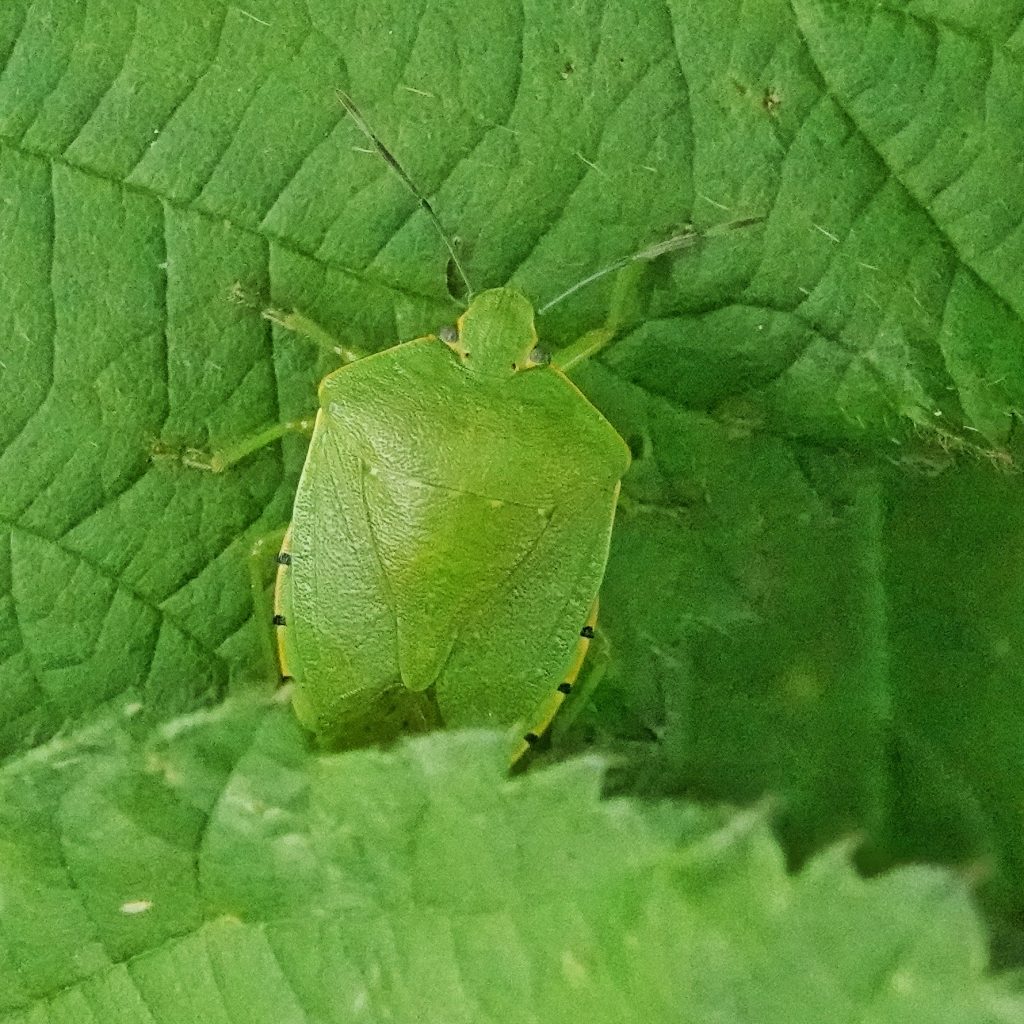
I’ve been hoping to find one of these Green Stink Bugs for awhile because they are a native, brightly colored but rather elegant in their simplicity, and they just look cool. And when I did see this one, on a cool, cloudy, and relatively bug-free morning at Columbia Springs, I almost missed it because, being color blind, it’s green blended right in to the green of the Himalayan Blackberry (Rubus bifrons) leaf it was perched upon. Only the fact that it was slightly lighter in color, and that I was looking for discoloration caused by leaf miners and skeletonizers, clued me into its presence.
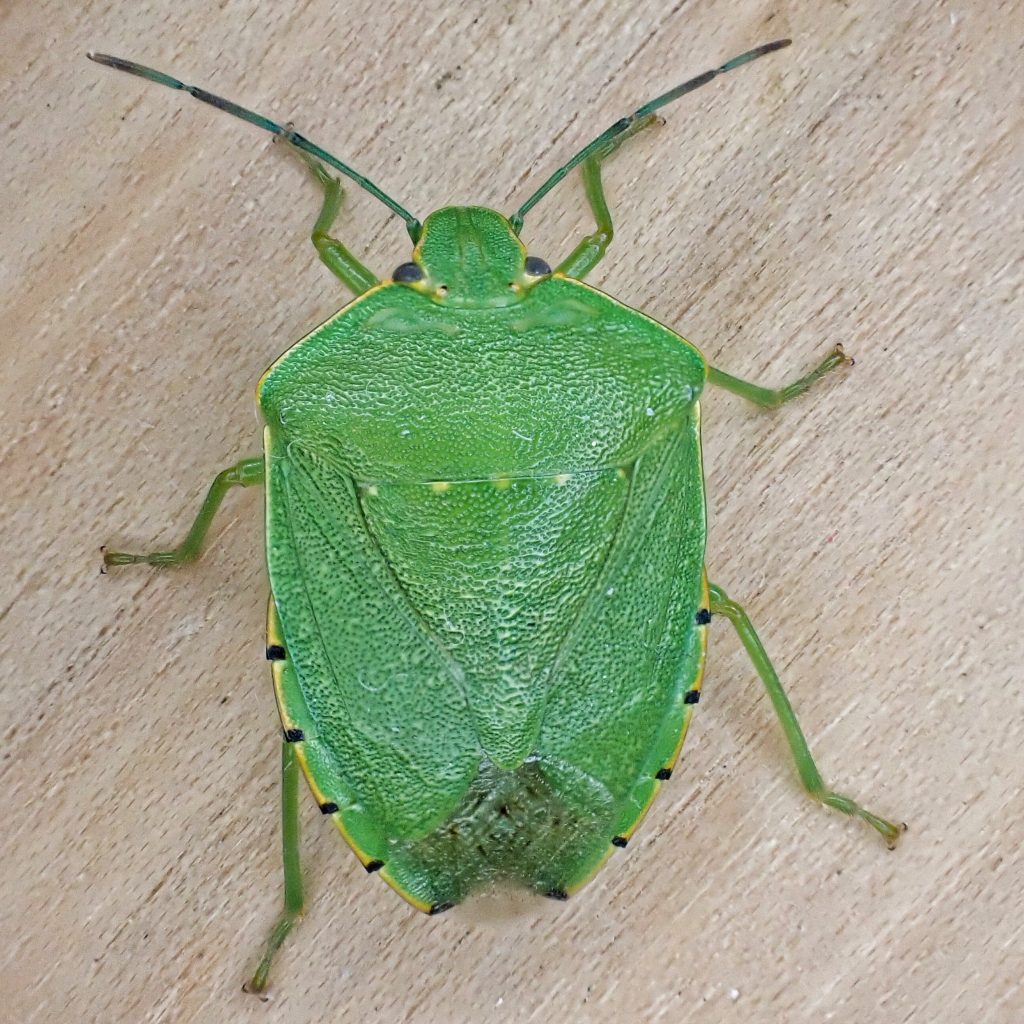
The fact that they are natives does not preclude them from being, in the eyes of farmers and horticulturists, a serious agricultural pest, especially on fruits and nuts. The damage they do is primarily cosmetic, and even in infestations they don’t consume much of the crop. But people like their produce to be pretty, and they are reluctant to purchase foods which are discolored or otherwise blemished. So Chinavia hilaris does cause economic hardship to the farmer, even though the produce itself is usually still edible. And the wounds produced by the feeding of the stink bugs allow ingress to fungi and other pathogens, which can have broader consequences.
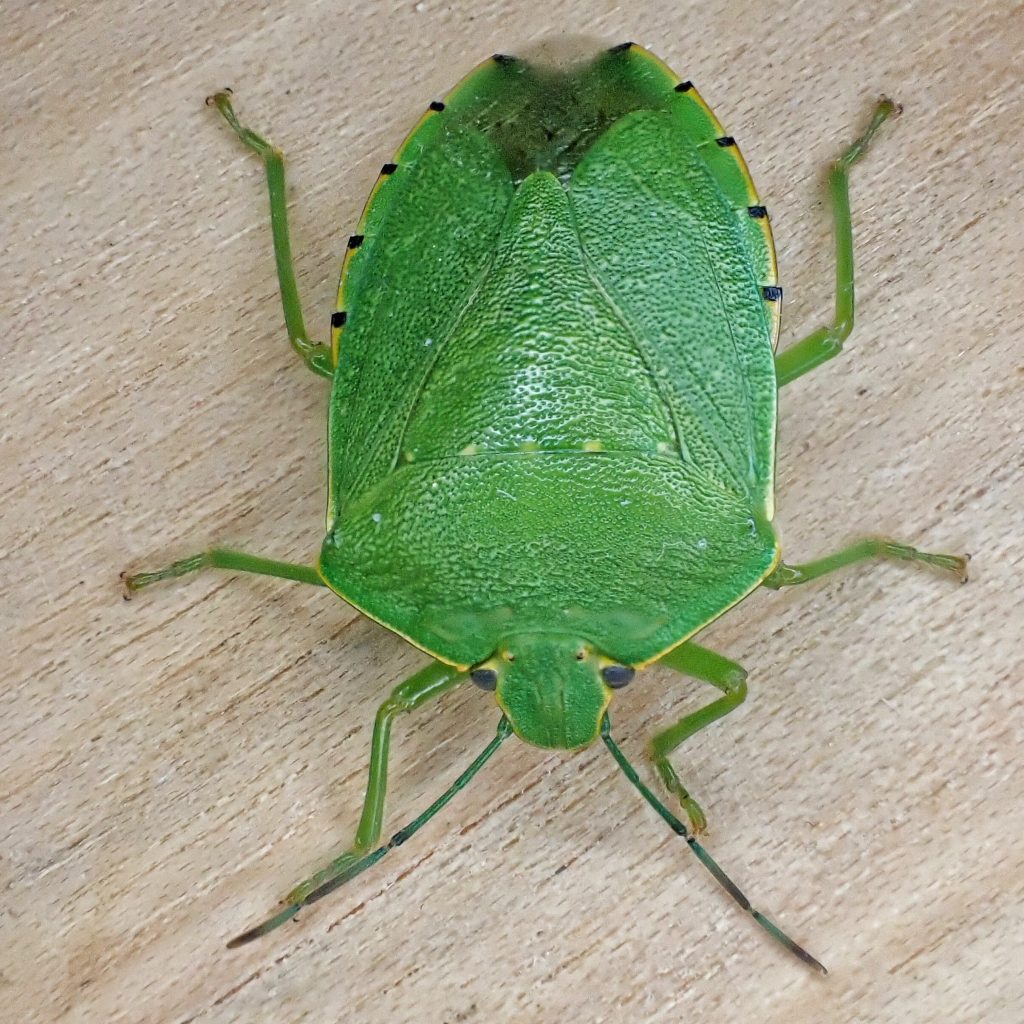
Description-Medium sized (13-19mm) green stink bug with black lines on the abdominal margin (connexivum), and pale dots on the front of the scutellum; outer segments of antennae are banded black and white, yellow, or green; pronotum with gently rounded corners, and is ± the same width as the hemelytra; For nymphal patterns see here
Similar species–Chlorochroa sp. lack marks on the connexivum, have unbanded outer antennal segments; Thyanta spp. have shorter pronotum which is distinctly wider than the hemelytra, and usually has a reddish band in front; Nezara viridula has apparently been recently introduced, and has tiny black spots at the front corners of the scutellum, antennae banded red and yellow, and usually has no marks on connexivum.
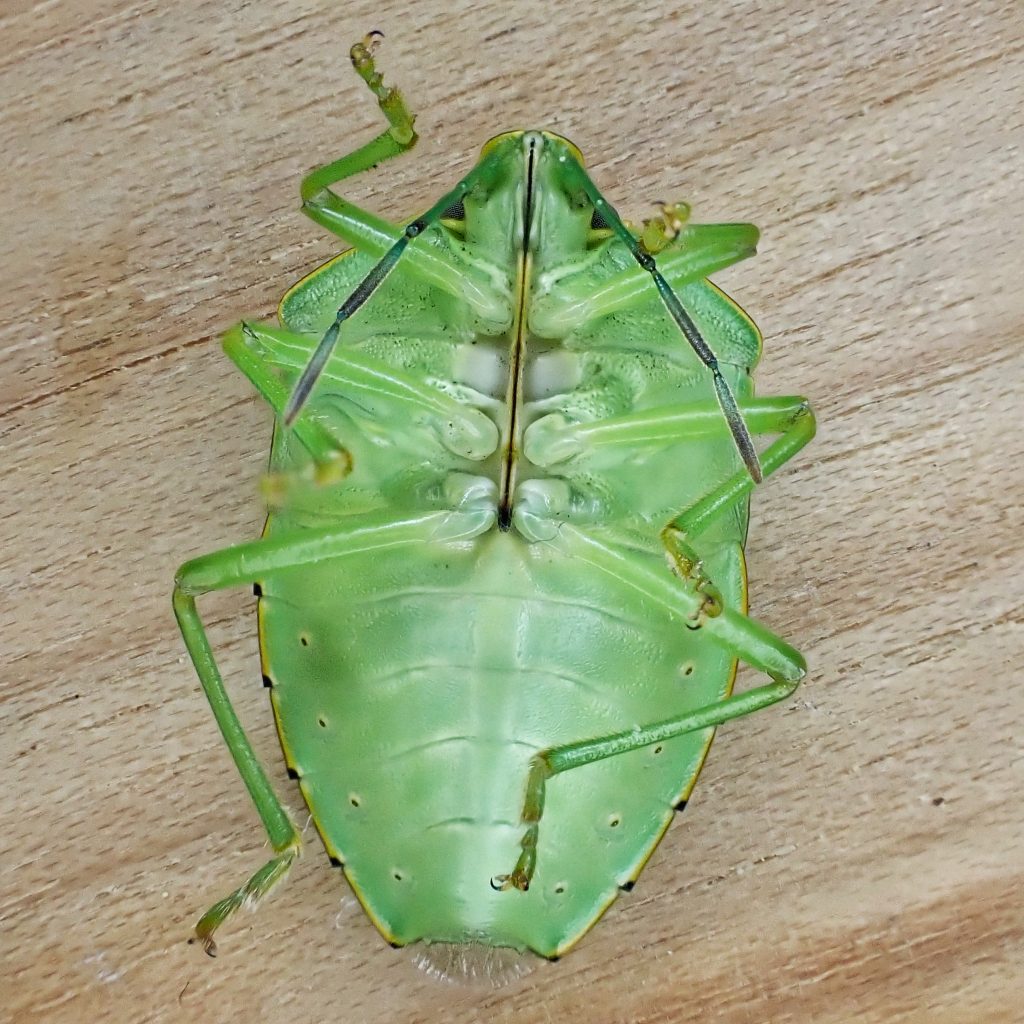
Habitat– Can be found anywhere there is something for them to eat, which is almost everything.
Range-Native to North America; can be found region wide
Eats-Polyphagous; prefers to eat fruits and seeds, but will eat leaves and stems; feeds by inserting its proboscis into the food source, injecting enzymes, and sucking out the resulting fluids; known from at least 20 families of plants, including cherries, elderberry, dogwood, blackberries, and pines, amongst others; considered to be a pest on apple, apricot, asparagus, beans, cherries, corn, peach, pear, peas, soybean, and tomato, amongst others.
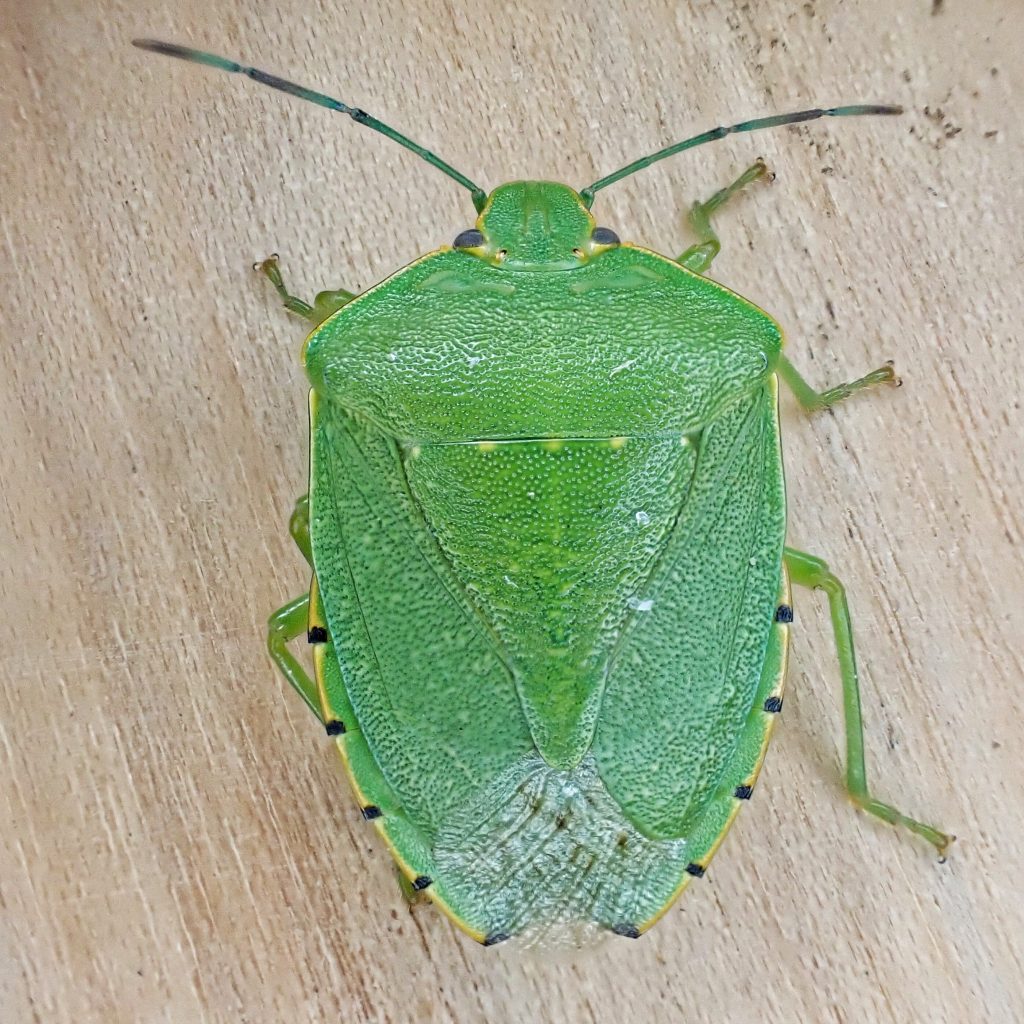
Eaten by– Jumping spiders in the genus Phidippus prey on adults and nymphs; the tachinid flies Trichopoda pennipes, Euclytia flava and Euthera tentatrix parasitize adults and nymphs; the wasps Trissolcus basalis, T edessae, T. euschistus, and those in the genus Anastus parasitize the eggs, and the wasps Hexacladia hilaris, Telenomus cristatus, T podisi parasitize nymphs and adults.
Adults active– Adults may be found year around, but are often in diapause during the coldest times of the year
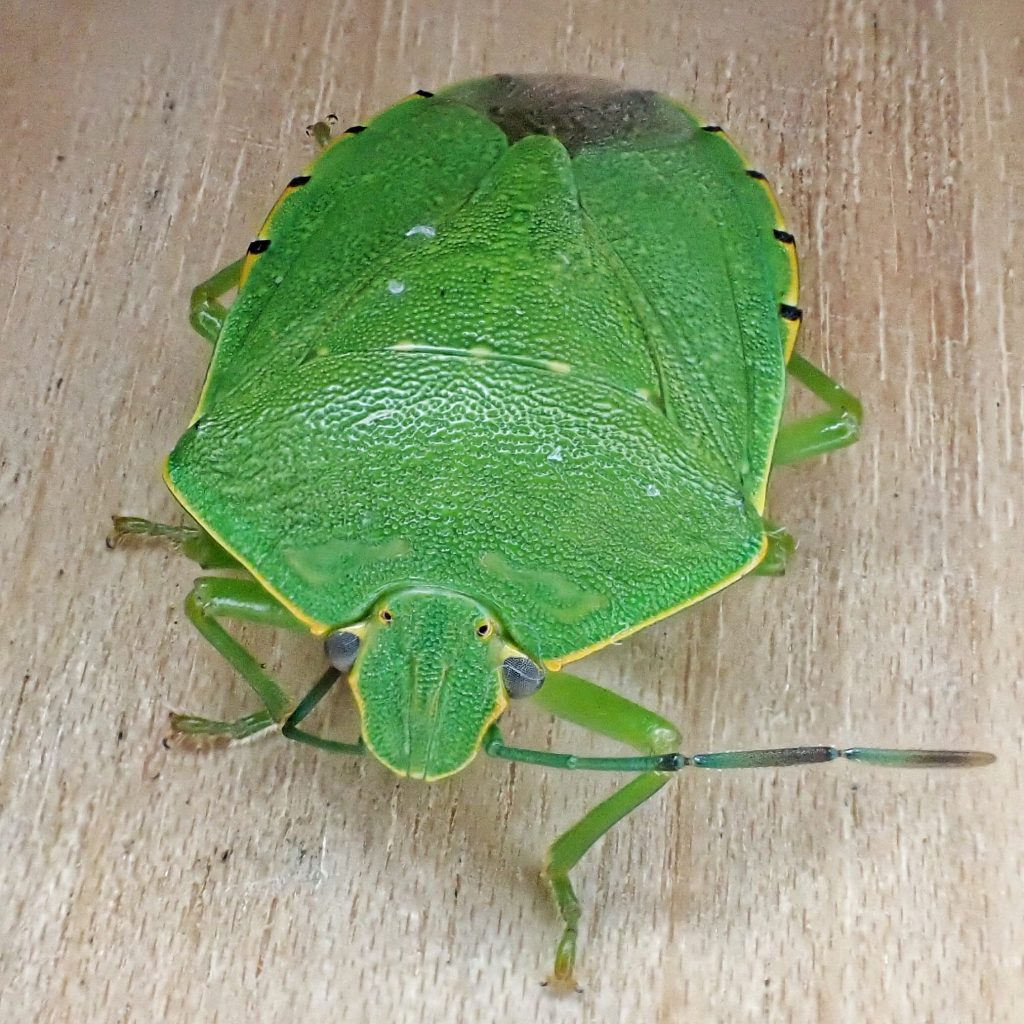
Life cycle-eggs and nymphs only thrive at temperatures between 64⁰ and 86⁰, with 68⁰-77⁰ being the optimal range; eggs hatch in 5-15 days, and the five instars take 5-10 weeks to complete; these times are temperature dependent, with shorter development times as the temperature moves toward the top of the optimal range; females produce 2-4 egg masses, with 19-22 eggs each; univoltine in our region; overwinters as an adult and mates early in the spring; total lifespan is about 14 months.
Etymology of names–Chinavia is an homage to William Edward China (1895-1979), a world renowned hemipterist and Keeper of Entomology at the British Museum (Natural History). The specific epithet hilaris is from the Greek for ‘cheerful/lively’, and, though I’m not sure to what that specifically refers, this bug certainly brought cheer to this recreational naturalist.
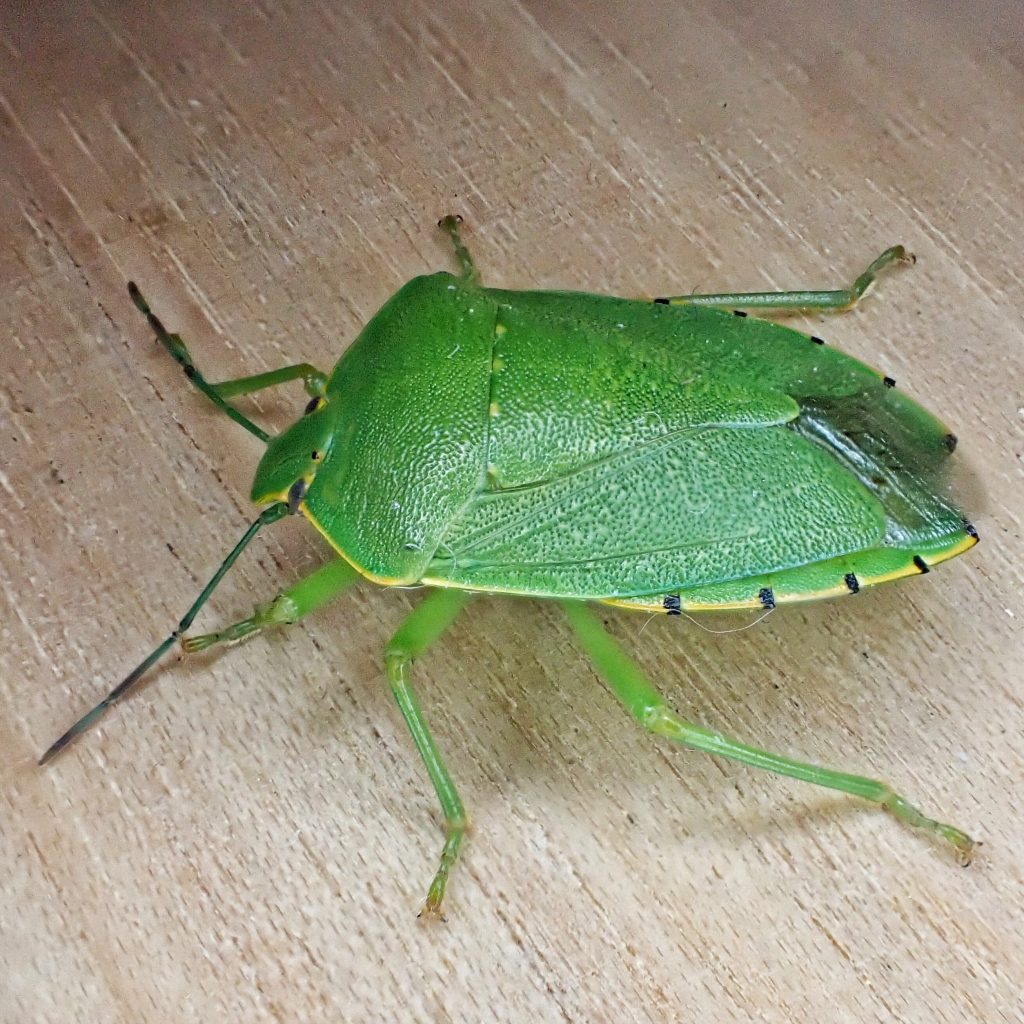
https://bugguide.net/node/view/9066
https://www.cabi.org/isc/datasheet/36281
https://entnemdept.ufl.edu/creatures/veg/bean/green_stink_bug.htm
https://www.ndsu.edu/pubweb/~rider/Pentatomoidea/Species_Nezarini/Chinavia_hilaris.htm
https://www.odaguides.us/chinavia-hilaris.html
chinavia hilaris – Google Scholar
https://en.m.wikipedia.org/wiki/William_Edward_China
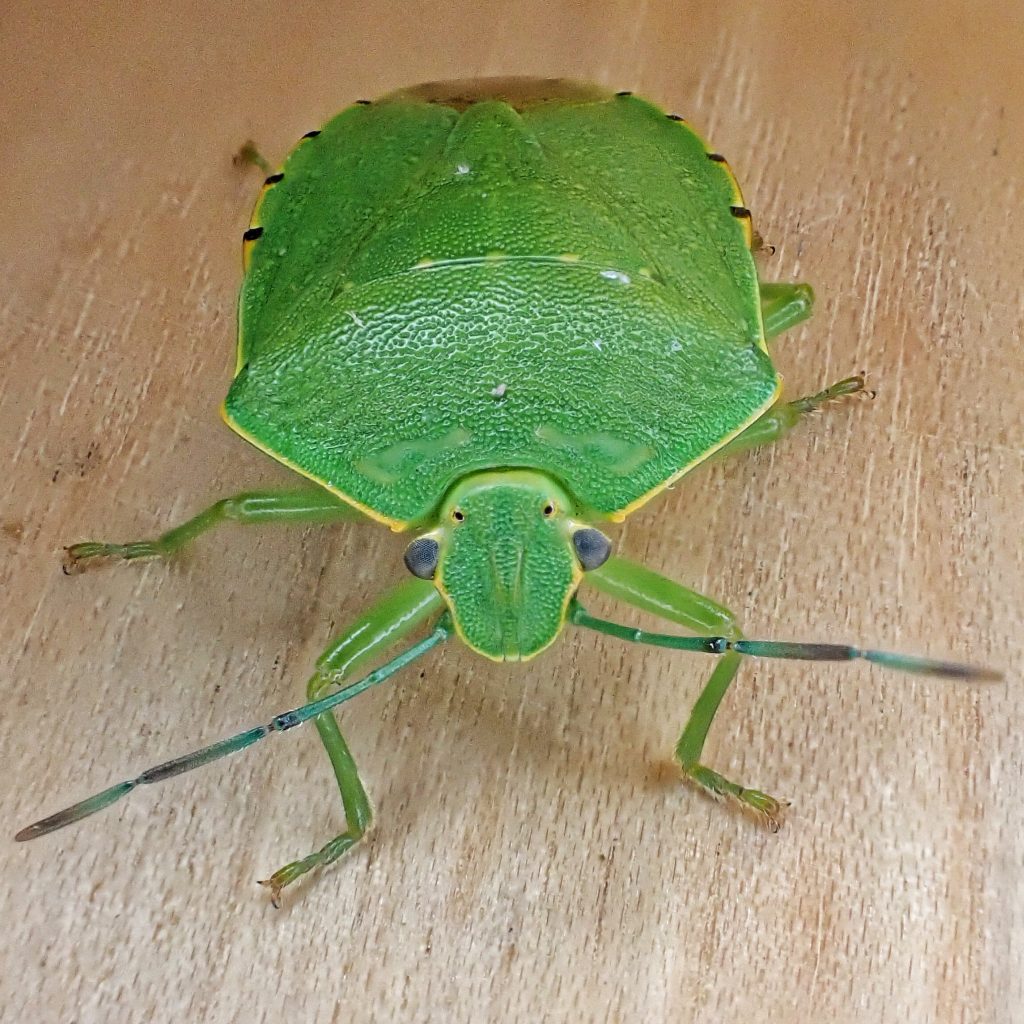
What a pretty bug, and I’m glad to know it’s native. Thanks for the post!
Thanks for your appreciation, Elaine!